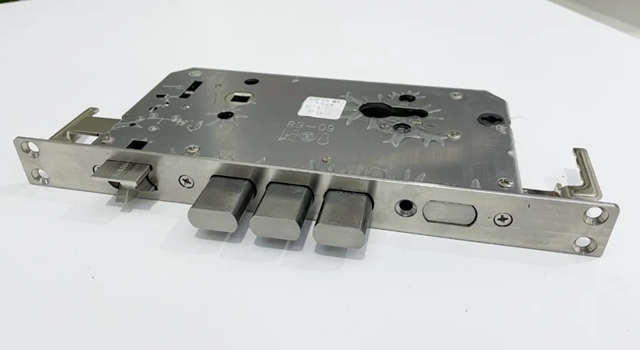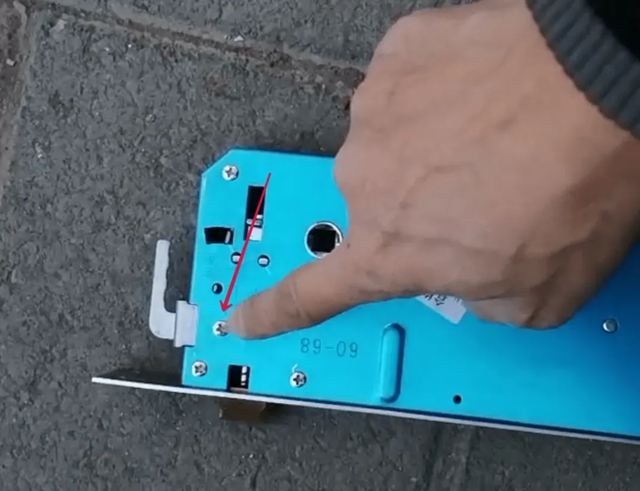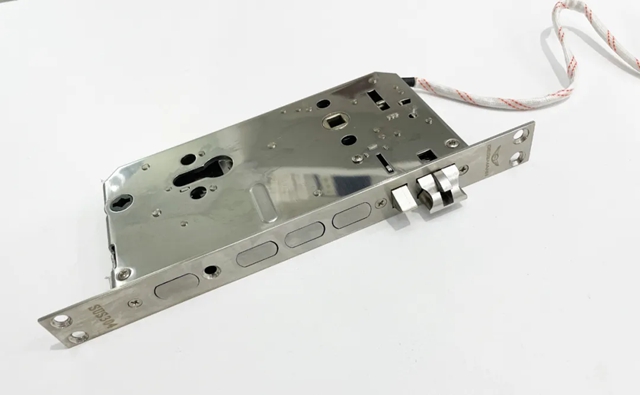In the world of smart locks, professionals often encounter lock bodies equipped with two bent hooks on either side. These hooks play a crucial role in determining whether the lock body is categorized as a true hook, false hook, or hookless. A true hook moves in conjunction with the latch, a false hook remains stationary regardless of latch movement, and a hookless lock body lacks hooks altogether.
Smart locks come with various types of lock bodies, including electronic, mechanical, gear, and BaWang lock bodies, each serving different purposes. To fully understand the differences and appropriate uses of true hook, false hook, and hookless lock bodies, one must consider specific scenarios.
True Hook Lock Body:
The true hook lock body is the most common and widely used type in both electronic and mechanical locks. The hooks on both sides of this lock body move in sync with the latch when the door is opened or closed, engaging with the door bolts or frame hooks. This type is especially popular when the existing door structure includes a top-and-bottom bolt system, often referred to as “heaven and earth bolts.”
False Hook Lock Body:
The main difference between a false hook lock body and a true hook lock body is that the hooks on a false hook lock body do not move. They remain fixed, regardless of whether the latch is engaged or not. Typically, these hooks are secured with screws, making them immobile. This type of lock body is a practical solution for users who prefer not to dismantle the heaven and earth bolts but still want to install a new lock.
Hookless Lock Body:
As the name suggests, a hookless lock body does not feature hooks on either side. This type is often found in electronic locks and is most suitable for wooden doors where the heaven and earth bolts are removed. It’s important to note that any lock body can become hookless by simply removing the hooks, making it a flexible option depending on the user’s preference.
None of these lock body types are inherently superior to the others; the key lies in the installation professional’s assessment of the situation. For instance, if a door has heaven and earth bolts but the user opts for a hookless lock body, the bolts will need to be removed or secured in place.
Additionally, user preference regarding heaven and earth bolts is an essential factor to consider. Although these bolts were originally designed to enhance security by preventing prying and theft, their effectiveness has diminished as building safety has improved. Moreover, in emergencies like fires, these bolts can hinder rescue operations. They also offer limited protection against advanced lock-picking techniques.
With the advancement of smart technology, smart locks now feature superior hardware and software, such as video surveillance and motion-sensing lights, providing 24/7 protection that surpasses the passive security offered by heaven and earth bolts.
Educating users about the function and limitations of heaven and earth bolts is crucial. Rather than fixating on the choice between true hook and false hook lock bodies, providing professional knowledge and guidance will better serve customers and enhance their security decisions.
Post time: Aug-14-2024







